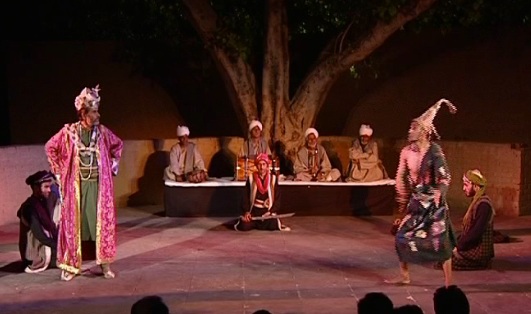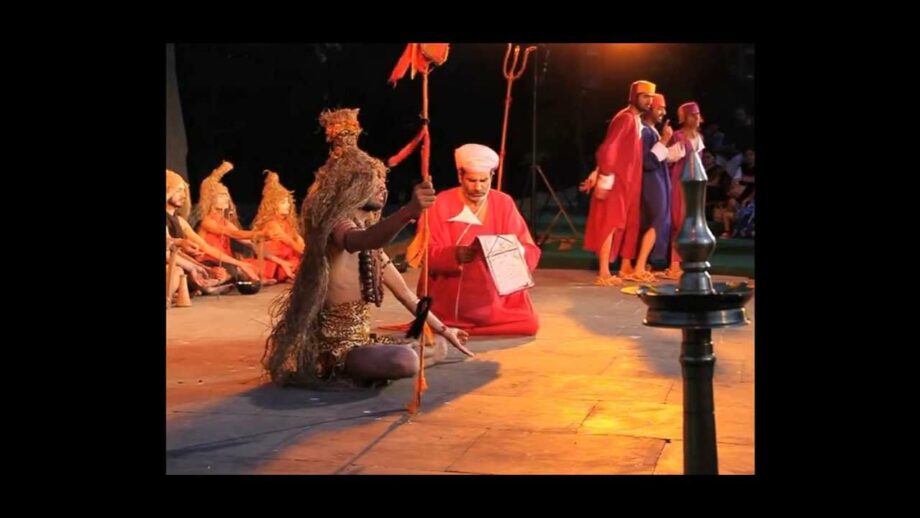It belongs to the oral tradition in which the scripts are handed down from one generation to the other following Guru Shishya Parampara. Only the scripts and the themes of the theatre remains old, the performances are always new as it is manifested in the new space and time. The plays of the Bhands are called pather, a word that must have been derived from Patra, a dramatic character.
Bhand comes from the Bhavana, a satirical and realistic drama that is generally a monologue. It has been mentioned in Bharata’s Natya Shastra too.
The bhand actors are skill-fully roped in the play and they enact contemporary religious, social and political issues into the prevalent stories. These actors used to train themselves to be a skilful actor, dancer, acrobat, and musician. The stories are narrated in such a manner that every performance has something fresh for the audiences.

The vocabulary used in Bhand Pather has connections to the Vakhs and Shrukhs of great medieval and modern mystics of Kashmir.
Over the period, this theatrical experience has evolved as a mature and complete theatre with roots in academic, historical and the cultural backdrop.
The IGNAC organized 3-day festival title ‘Revisiting Bhand Pather: Home Theatre of Kashmir’ under its program ‘Shastra and Prayoga’. During this festival, three plays would be staged from this genre of theatre namely Gosain Pather, Shikaragah Pather, and Badshah Pather at the amphitheater theatre of the institute for three successive days.
This form of theatre has a traditional performance from the Vale of Kashmir who portrays social, cultural, religious and political dilemmas prevailing in the state. Also, the theatre is marked by existing tensions and hypocrisies through mimicry, realism, satire, and comedy. Through amusement and irony, the messages are conveyed to the audience cleverly via the medium of performing art.


